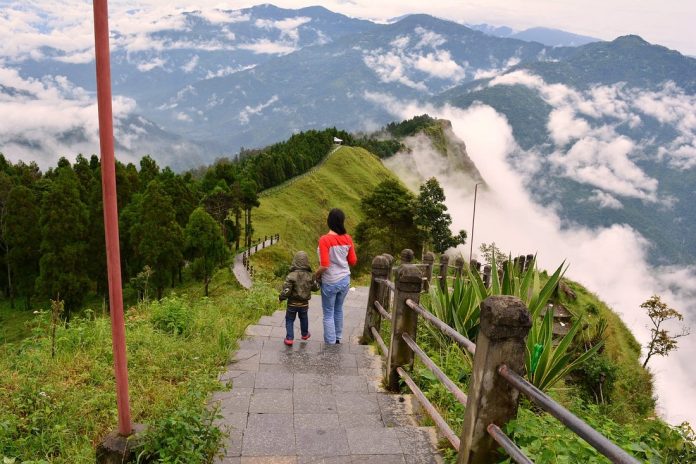By Journey Man
Sikkim is mesmerizing. Its beauty captivates, provides peace and tranquillity and inner strength. That is why Sikkim attracts tourists from all over the world. Surrounded by pristine snow-capped mountains and dense green forests, the southern region of Sikkim welcomes you to spend your holiday amid a super picturesque landscape.
Whether you are on your honeymoon or looking for a gateway close to nature or for a relaxing and peaceful hideout, south Sikkim has everything to make your trip a memorable one. If you are a nature lover and looking for a retreat in nature’s paradise, then various locations in south Sikkim can be your perfect holiday spot.
South Sikkim is a perfect destination for adventure lovers and obviously for those who are looking for an escape from the touristy places and the clamour of city life. The district offers plenty opportunities for unwinding, boating, trekking and exploring nature.
Despite the fact that South Sikkim isn’t as famous as North Sikkim, this little region of Sikkim can possibly pull in sightseers with assorted interests – be it nature-cherishing travellers or religious and profound looking voyagers or legacy and chronicled visitors. With the beautiful scene, rich greenery, landmarks and social legacy, south Sikkim arouses and resuscitates internal peace.
Namchi is the capital of South Sikkim and its most important destination. There are other beautiful destinations in South Sikkim too, each with its unique brand of charm. Learn all about the popular spots and unexplored upcoming destinations in South Sikkim.
Geographical Information
South Sikkim is a district of the state of Sikkim in India. This district is located in the southern region of the state. In the entire state of Sikkim, the district of South Sikkim ranks second in terms of population. The population of South Sikkim of Sikkim is denser than that of East Sikkim, the most populated district of Sikkim. But, South Sikkim is a smaller district than East Sikkim.
The southern district of Sikkim has varying altitude. You will find areas ranging from 2000m to 400 m altitude. Sloped terraced farming sloped and rich agricultural lands mark south Sikkim. This is one of Sikkim’s most fertile zones though area wise it’s the tiniest of all the 4 zones.


South Sikkim Area – 750 square kilometres.
Capital – Namchi.
Language – Nepali, Bhutia and Lepcha
Population – 1, 31,506 (as per 2011 Census).
Popular Places to Visit in North Sikkim – Namchi, Tea Gardens, Maenam Wildlife Sanctuary, etc.
Best Time to Visit North Sikkim– mid-September and November and also the time between April and mid-June
Nearest Airport & Railway Station– The closest railway station as well as the closest airport is located at Siliguri. This place is located a distance of 100 kms from Namchi.
Namchi
Namchi Easily is the most popular destination of South Sikkim. Namchi has been now developed as an active centre of religious tourism. All the four holy dhams of India have been replicated in Namchi in the most visited attraction here known as Char Dham. There is also a gigantic statue of Guru Padmasambhava.
Another important religious attraction in Namchi is the Samdruptse Hill which is supposed to possess mythical wish fulfilling properties… incidentally this was once a volcanic site.
There are two important festivals that happen each year in Namchi. The Sikkim Gold Cup football tournament, held in Bhaichung stadium is the first event. The second happens in February. It is the annual flower show (the largest in Sikkim) which stars a mind boggling array of orchids.
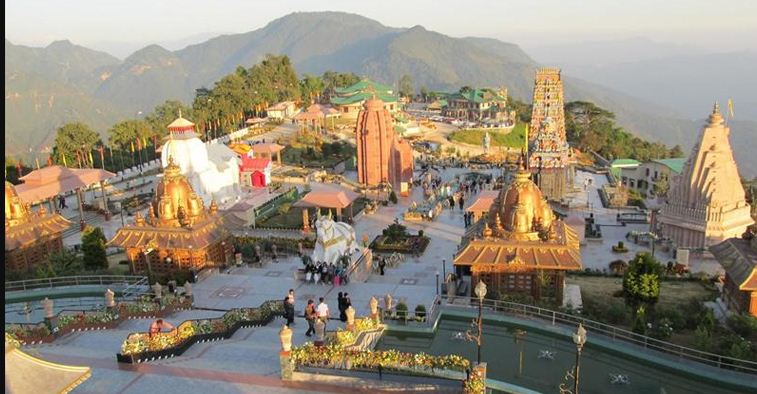

In October a number of mid-scale cultural and food festivals happen in Namchi. Though not known as a shopping destination, Namchi has a bustling town market which is stocked with interesting souvenirs and handicraft. The town square of Namchi and the Central Park is a pleasant place to pass time.
The Ngadak Monastery, doling Gompa, Shirdi Sai Mandir and pilgrimage centre, Namchi rock garden are other beautiful attractions around Namchi. Another great place to visit is Namchi Helipad that’s a large open space commanding views of the char dham, town and the Kanchenjunga peaks.
Best time to visit: March to May the weather is pleasant in Namchi while September to November is another good time.
How to reach
By Air – The nearest airport is Bagdogra airport which is 124 km from Gangtok and 190 km from Mangan. Gangtok and Bagdogra are connected through helicopter services to Namchi.
By Train – The nearest rail is New Jalpaiguri, which is about 94km from Namchi.
By Road – Namchi is well connected to the neighbouring cities like Gangtok, Bagdogra, New Jalpaiguri and a few other cities and towns of Sikkim.
Ravangla
Located between Pelling and Gangtok, Ravangla is one of the popular destinations in south Sikkim. It is a small town not meant to be touristy – a laid back spot nestled in the mountains, where you can slow down the pace of your life, and sooth your senses in nature.
Ravangla is located at an altitude of 7,000 ft. Though the main streets are not best located for giving beautiful views of the Himalayas, treks starting in Ravangla are a great way to soak in the beauty of the mountains.
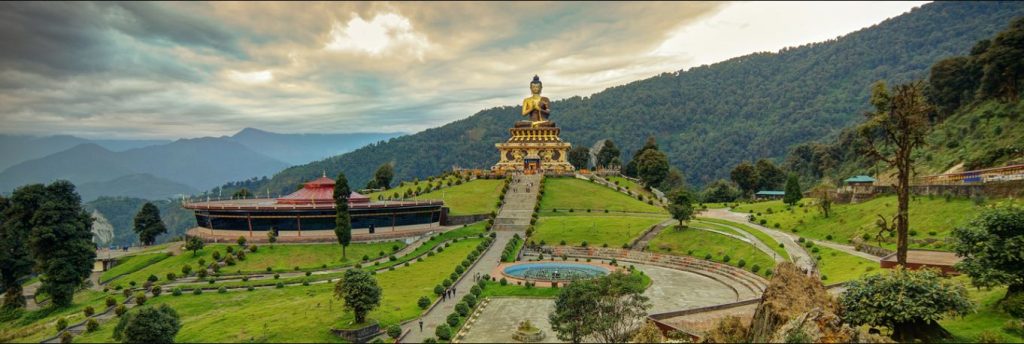

Travellers wanting to go off the beaten track often choose Ravangla as their base, from where they can travel to other towns in Sikkim.
Ravangla is a unique town, with a myriad range of flora & fauna, small villages surrounding the main town where you can see the local lifestyle, splendid views, old monasteries, and cultural celebrations.
The traditional festivals are celebrated here with a lot of gusto and are a delight for any traveller, Indian or otherwise.
Ravangla, though a small town, is perfectly equipped to capture the imagination of a traveller. At short distances from the main town, there are monasteries and other places of interest. The short journey to local sights is just as beautiful as the sights themselves.
Best time to visit: Ravangla has an unpredictable climate, and is known for being rainy at short notice. It is best to avoid the monsoon entirely. Autumn is the best season to visit – from September to December.
How to reach
By Air – The nearest airport is Bagdogra airport which is 124 km from Gangtok and 190 km from Mangan. Gangtok and Bagdogra are connected by cabs to Ravangla.
By Rail – The nearest rail is New Jalpaiguri, which is about 134km from Ravangla. Cabs are available from New Jalpaiguri to Ravangla.
By Road – Ravangla is accessible from all major places of Sikkim, which include Gangtok, Pelling and Namchi. It can also be reached from Darjeeling. Rented cars from Siliguri and Bagdogra are also available.
Sikip
Perched prettily on the banks of Rangeet river, Sikip is one of the emerging tourist destinations of South Sikkim. You will hear it referred to as an anglers’ paradise. There are plenty of streams here teeming with fish and the laid back ambience is perfect for day long fishing trips. River rafting down the Rangeet is a preferred activity here. Many tourists who come here prefer to camp under the stars. Sikip has a temperate climate.
A heaven for adventure enthusiasts, the shimmering yet turbulent water of river Rangeet is perfect for rafting which offers an adrenaline rush to the tourists.
The captivating surrounding along with the mountain peaks in the backdrop is the major attraction of the village. The shimmering river Rangeet flows beside the hamlet which increases the attraction of it. A stunning sunrise looming over the mountain peaks and a sunset which makes the sky crimson.
Flower gardens with blooming flowers adorn most households. A beautiful bridge over the river Rangeet at Sikip is one of the prime attractions. Nearby sightseeing places like Samdruptse, Temi Tea Garden, Ravangla, Borong and Namchi, etc.
There are no proper hotels in Sikip. However there are a few homestays run by the villagers as extensions of their homes.
Best Time to visit: All through the year, however, to make the most of rafting opportunities, the months of March to May and October to December is the best time.
How to reach: Sikip can be reached from Gangtok via the Legship on a motorable road in about 5 hours. One can hire a car and reach here from Darjeeling and Siliguri via Jorethang.
Jorethang
A major town in South Sikkim, Jorethang sprawls on the foothills below which the river Rangeet flows. Jorethang stands at an altitude of 300m above sea level and thus has a temperate climate, which is quite pleasant. The town is situated on the way to Pelling and is known for its Akar Suspension Bridge.
Jorethang is famous primarily for its Maghe Mela, a cultural festival that happens in January every year. It is celebrated at the same time as Makar Sankranti, or the advent of the Sun into the Makar (Capricorn) rash. It is marked by cultural dances from across Sikkim, setting up of stalls selling different artistic and traditional wears, and many other cultural activities organized on a large scale.
Jorethang is also a good place for river rafting, trekking and short walks to nearby spots. It is advised to enquire about the best times for river rafting before making a trip, as the river water is best suited for river rafting in certain seasons.
Jorethang is only 30km from Darjeeling and thus makes a great weekend destination near West Bengal. It is to be noted that the place is for those seeking an escape from the routines and hustle and bustle of city life.
Best time to visit: All year though, the winters are scenically more beautiful.
How to reach
By Air – The nearest airport is at Bagdogra, West Bengal, which is about 124 km from Gangtok.
By Rail – New Jalpaiguri Railway Station in West Bengal is the closest railhead, which is around 125 km from Gangtok.
By Road – There are many shared jeeps to Pelling and Gangtok via Jorethang. Private cabs are also available from major towns of Sikkim and West Bengal to Jorethang.
Tendong Hill
Tendong hill, located above Damthang and overlooking Namchi, has become one of the most prominent landmarks in South Sikkim. It can be approached only by trekking which starts from Damthang, a 13 km drive from Ravangla.
The span of the trek route is around 6 km which passes through lush green forest rich in spectacular flora and wildlife. More than 90 species of birds, Himalayan Bears, leopards and illusive Red Pandas inhabit this forest. Hill top is at a height of 8660 ft and offers spectacular views of the entire eastern Himalayas.
Historically this has been a place of recluse for Buddhist Lamas who spend years in meditation amidst the silent scenic grandeur. As per the Lepcha folklore Tendong Hill gets its name, meaning ‘Upraised Horn’ and the myths of Lepcha which passed on through generation are that, Tendong saved them from the great deluge, which submerged the entire world. This lore has an amazing resemblance with Noah’s Ark as Mount Ararat becomes the saviour like Tendong Hill.
It is a sacred place. Even today Lepcha’s pay homage to Tendong Hill on the occasion of Lho Rum Faat.
A small monastery and a three storied watch tower is set at the top. From the watch tower the 360 degree view is really superb. Nowhere from Sikkim offers such an astonishing view of the entire range.
Best Time to Visit: Best visited in spring and summers i.e. between March to June.
How to reach: Tendong can be trekked from Ravangla.
Temi Tea Gardens
Sikkim’s only tea garden is a great destination for tourists looking for a different kind of experience. Most of the tea produced here in this 453 acre large garden is exported and the flavours are delicate with a completely different twist that allow them to be demarcated from the Darjeeling Teas that Indians seem to prefer more.
Temi Tea garden sprawls all over a mild to steep hill slope that begins from the Tendong Hill and creates the scope of a majestic view of the nearby terraced slopes and villages. The approach road and surroundings are filled with pine and prune trees and there are numerous walking trails all around. There is a cafeteria, tea shop and gift shop inside the tea garden.
Tea processing tours can be pre-arranged in the Temi Tea Gardens even for day visitors.
Best Time to visit: Visit between October and February if you want clear mountain views. November and December are the best months for nature lovers who want to see the cherry blossoms in their full splendour.
How to reach: The best way to reach here is by private hired car or taxi. Gangtok to Temi Tea Garden is 55.3 km. Pelling to Temi Tea Garden is 68.8 km Ravangla to Temi Tea Garden is 21 km
Maenam Wildlife Sanctuary
The Maenam Wildlife Sanctuary is a treasure house of Medicine as it houses a rich assortment of Medicinal plants and herbs. It covers an area of 36.34 sq km and is located on the Maenam-Tendong ridge which runs from north to south, almost bisecting Sikkim longitudinally.
This sanctuary is famous for trekking and its rich biodiversity. The altitude ranges between 2300 meters to 3263 meters. A fabulous trek to Maenam Peak and further to Bhaledunga originates from Ravangla passing through the virgin track of alpine forest with a commanding view of Khangchendzonga snow peaks.
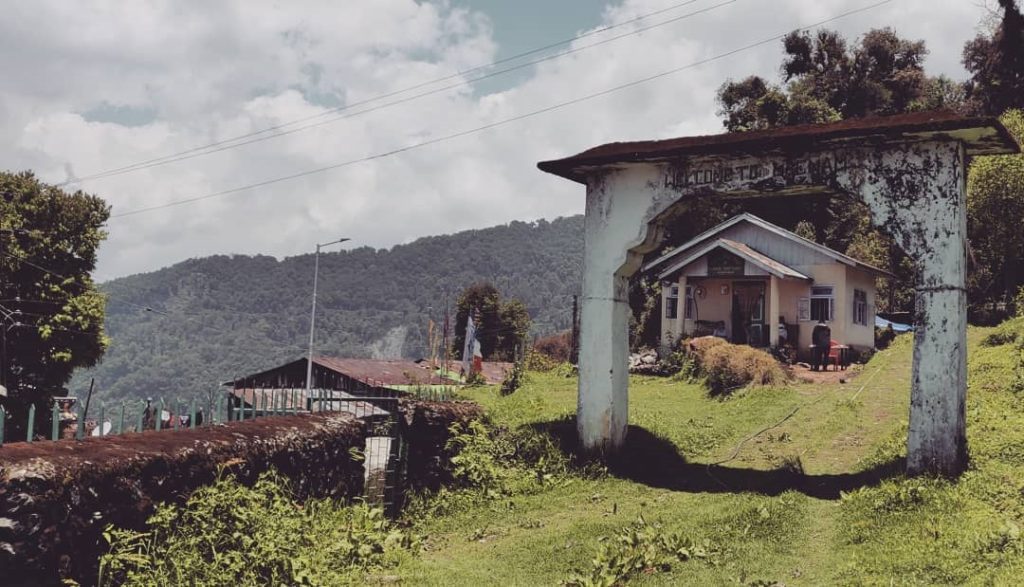

There is a historical Buddhist Monastery called Maenam Gumpa on the top ridge of the sanctuary. Maenam Gumpa was established in 1969. Apart from this there is a temple of Lord Shiva, which is worshiped by the local villagers and is considered a sacred place. The streams which originate from the eastern side of the sanctuary mingle into the Teesta River and those which lie in the western flank gradually drain into the Rangit River.
Best time to visit: March-June
How to reach: It takes approximately 4 hrs to trek from Ravangla to Maenam peak and thereafter leads down to Borong Village.
Solophok Chardham Namchi
Solophok Chardham is famous for the Lord Shiva big sitting statue and perfect destination for Shiva to visit. This popular attraction of Sikkim was founded by Shri Pawan Chamling and the statue of Lord Shiva is 87 feet huge in its main temple with the height of 08 feet. This is the Pilgrimage-cum-Cultural Centre and Lord Shiva seated in Solophok Hill and constituted with 12 Jyotirlingas.
The localities also say that this place has the statue of Lord Kirateshwar and its height is 16 ft. As per the Hindu religion the visit of the Chardham is pilgrimages and this is having religious destinations such as Puri, Badrinath, Dwarka and Rameshwarm.
The Solophok Hills is spread in the 7 acres of area and having 4 parts like Lord Shiva statue with 12 jyotirlingas, Sai Baba Temple, Kirateshwar statue, Chardham and there are more other destinations that will give you spellbound experience like Kirat dwar, Nandi bull temple and Sai Dwar and many more.
Best time to visit: Solophok is an absolutely outstanding place to go for the religious people who believe in gaining positive energy. So summer is the best time to visit this place to discover every detail in the proper way. There would not be any storm alert in summer time so this is the way to do Darshan and gives you a true bliss of life.
How to reach: Solophok is well-connected by road from Namchi. One can book cabs or take shared jeeps.
Borong
Borong, nestled on the foothills of Maenam Hill is a new-found offbeat destination in South Sikkim. It is a quaint village near Ravangla in South Sikkim which has recently gained fame due to increasing popularity of eco-tourism activities. Sited amidst the alpine landscape, wildlife, dense verdant woodland, hot spring, sylvan forests & water falls Borong is blessed with abundance of nature.
Overlooking the snow capped mountains of Narsing, Simmho and Sinolchu, Borong in South Sikkim is famous for its ethereal beauty and serene ambiance.
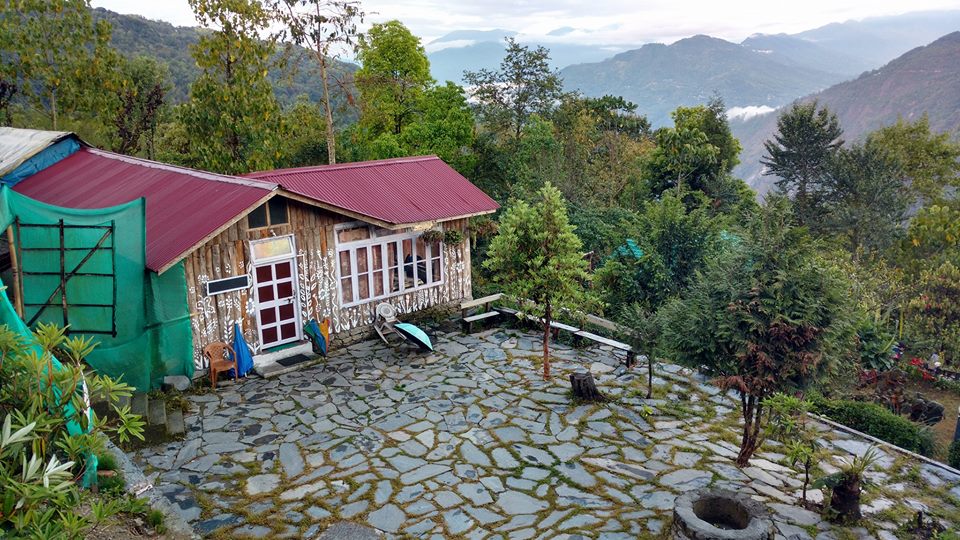

Perched at an altitude of 5800ft Borong in South Sikkim has become the new hub for the traveller who wants to stay amid nature.
From Borong it is possible to go trekking/ mountaineering to the Siniolchu, Pandim and Narsingh peaks. Incidentally, this place is a favourite among trekkers and mountaineers. You can also go on a 2.5 hour trek to Meenam Hills where there are superior opportunities for bird watching and great scenic views. The more adventurous can embark on a trek from Namchi that terminates in Borong (6 day medium-difficulty trek).
How to reach
By Air – The nearest airport of Borong is in Bagdogra. It takes approx 5hrs drive to reach Borong from Bagdogra airport.
By Rail – The nearest railway station of Borong is New Jalpaiguri Railway Station. From NJP it is an overall 5hrs journey to reach Borong.
Best time to visit
April to June: During this season visitors can enjoy the serene ambiance of Borong and witness the vibrant vista of blooming flowers
in the valley enclosing Borong.
October to March: During this time of the year travellers can see the amazing view of snow capped Himalayas from Borong. This is also the best time to partake in activities like trekking and hiking in Borong. During the month of February, Borong hosts a grandiose festival along the banks of River Rangeet.
Sumbuk
One of the most unexplored destinations of Sikkim with astounding flora and fauna is Sumbuk located in the Southern district of Sikkim.
Namchi Sumbuk is divided into two parts. Lower Sumbuk with an altitude of 1,500 ft covered with temperate forest is a good place for watching birds like peacocks, hornbills etc. Upper Sumbuk is located at an altitude of 7,000 ft rich with endless stretches of pine forests.
To witness varieties of rhododendron, wild orchids, pines, wild strawberries visit Mungram village also popularly known as Phool Dnara (the hilltop of flowers) situated at an altitude of 7,000 ft. Numerous Gladiolas farms, few age old temples and the bank of river Rangit makes this place uniquely different then other spots. Above Phool Dnara is located Tamley Chaur, the place is covered with pines, ferns, rhododendrons, cinnamons and wild strawberries also offers you breathtaking scenic views. A lake named Tamley Pokhri is another attraction of this place. Mt. Kanchenjungha with its majestic style is visible from the natural view point of Upper Sumbuk.
Best time to visit: Summers, autumn and winters are ideal for visit. Rains are heavy here so it’s best to avoid this place between July to September.
How to reach : Sumbuk enjoys good connectivity to Siliguri via NH 31 and is only 110 km away. It will take about 4 hours to reach by taxi.

